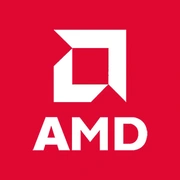AMD FX-8320E

AMD FX-8320E: A Budget Eight-Core Processor for Niche Tasks in 2025
Updated: April 2025
1. Key Specifications: Architecture and Features
The AMD FX-8320E processor, released in 2014, remains an interesting artifact from the era of the multicore battle. Built on the Piledriver microarchitecture (codename Vishera) using a 32 nm process, it offers 8 physical cores and 8 threads. However, these are not modern cores with SMT technology—this uses a modular CMT system where two cores share some resources. This explains its low performance in single-threaded tasks (Geekbench 6 Single Core: 439), but allows for modest multithreaded performance (Geekbench 6 Multi Core: 1734).
Key Features:
- L3 Cache: 8 MB (shared across all cores).
- TDP: 95W (lower than the higher-end FX-8000 models).
- Unlocked multiplier for overclocking.
- No integrated graphics—graphics capabilities depend on the motherboard chipset (e.g., AMD 990FX with HDMI support via external controllers).
Real-World Experience:
In 2025, the FX-8320E appears archaic, but for tasks like rendering simple 3D scenes or encoding video in HandBrake (using all 8 cores), it can still demonstrate its utility. For instance, rendering a project in Blender takes about 30-40% longer than with a Ryzen 5 5500, yet this processor can be found for $50-70 (new units are rare but occasionally show up in stock).
2. Compatible Motherboards: Sockets and Chipsets
The FX-8320E uses the outdated AM3+ socket, imposing strict limitations:
- Supported chipsets: 970, 990X, 990FX.
- New boards: Not manufactured since 2017. In 2025, only used versions or "new" old stock are available for $60-100 (e.g., ASUS M5A97 R2.0).
- Selection Tips:
- For overclocking, look for boards with a strong VRM (at least 6+2 phases), like the Gigabyte GA-990FX-Gaming.
- Check for support for specific features: USB 3.0, SATA III (not all models have these).
- BIOS must be updated to a version supporting the FX series (relevant for boards released in 2012-2013).
Tip: If you find a "new" board with a 990FX chipset, ensure it hasn't been stored in high humidity—a situation that may have degraded the capacitors.
3. Supported Memory: Only DDR3
The FX-8320E works exclusively with DDR3 memory:
- Officially: Up to 1866 MHz (in dual-channel mode).
- Actually: On some boards with overclocking, speeds can reach 2133-2400 MHz, but performance gains in games will be minimal (5-8%).
- Recommendations:
- Use two 8 GB modules (e.g., Kingston HyperX Fury 1866 MHz) for dual-channel operation.
- Avoid memory with high timings (CL9-CL11 are optimal).
Important: DDR4 and DDR5 are not supported. For comparison, even budget Ryzen 5000 processors support DDR4-3200, granting them a bandwidth advantage.
4. Power Supply: Power Calculation
With a TDP of 95W, the processor is relatively energy-efficient, but during overclocking (up to 4.2-4.5 GHz), consumption can reach 140-160W. Recommendations:
- Without overclocking: A 450-500W PSU (e.g., be quiet! System Power 10 500W).
- With overclocking: 550-600W (Cooler Master MWE Bronze 600W).
- Features:
- Look for units with an 80+ Bronze certification and strong +12V rail (at least 40A).
- If using a discrete graphics card like the NVIDIA GTX 1660 Super, add 120-150W to your calculations.
Example Build:
FX-8320E + Radeon RX 580 (150W) + 2 HDD → minimum PSU: 550W.
5. Pros and Cons of FX-8320E in 2025
Pros:
- Price: One of the cheapest 8-core processors on the market.
- Overclocking potential: With good cooling (e.g., Deepcool Gammaxx 400), you can squeeze up to a 20% increase.
- OS compatibility: Works with Windows 10/11 and Linux (drivers not required).
Cons:
- Outdated architecture: No support for AVX2, PCIe 3.0, NVMe (only through adapters).
- Weak IPC: Single-core performance is 2.5 times lower than that of Ryzen 5 5500.
- Energy efficiency: Even after undervolting, it lags behind modern APUs.
6. Use Cases: Where is FX-8320E Relevant?
- Office PCs: For browsing, office applications, and light graphic work (e.g., GIMP).
- Media center: Paired with a GT 1030 graphics card, it can decode 4K H.265 via GPU.
- Server tasks: NAS based on TrueNAS or a home file server.
- Educational projects: Learning the basics of multithreaded programming.
Gaming Performance:
- Older games: Skyrim, GTA V on medium settings (1080p, 40-50 FPS with RX 570).
- Modern titles: Cyberpunk 2077 will launch but at frame rates below 30 FPS even on low settings.
7. Comparison with Competitors
- Intel Core i5-4460 (4C/4T): Better in single-threaded tasks (+25%), but worse in multithreaded tasks (-40%). Price: $30-40.
- AMD Ryzen 3 4100 (4C/8T): 50% faster in games, supports DDR4 and PCIe 4.0. Price: $90 (new).
- Intel Xeon E5-2670 (8C/16T): Cheaper ($25), but requires a server motherboard and DDR3 ECC.
Conclusion: The FX-8320E makes sense only with a strict budget of up to $100 for the entire build.
8. Building Tips
- SSD is a must: A SATA SSD (e.g., Kingston A400 480GB) will reduce OS boot times.
- Cooling: At least a tower cooler with heat pipes.
- Graphics card: Don't select a GPU costing over $150—this processor will become a bottleneck.
- Upgrade: Consider the AM4 platform (Ryzen 5 5500) or AM5 for future upgrades.
9. Conclusion: Who is FX-8320E Suitable For?
This processor should only be considered in three scenarios:
1. Ultra-budget build: When the goal is to stay within $200-250 for a general-purpose PC.
2. Experimentation: For learning overclocking and BIOS modification.
3. Upgrading an old PC: If you already have an AM3+ motherboard and DDR3.
Alternative: For the same $50-70, you can buy a used Ryzen 3 1200 (4C/4T) on the AM4 platform, which allows for upgrade potential.
The FX-8320E in 2025 is a relic, reminding us of the times when AMD focused on multicore without efficiency. However, for very niche tasks, it can still be useful.
Basic
CPU Specifications
Memory Specifications
GPU Specifications
Benchmarks
Compared to Other CPU
Share in social media
Or Link To Us
<a href="https://cputronic.com/index.php/cpu/amd-fx-8320e" target="_blank">AMD FX-8320E</a>